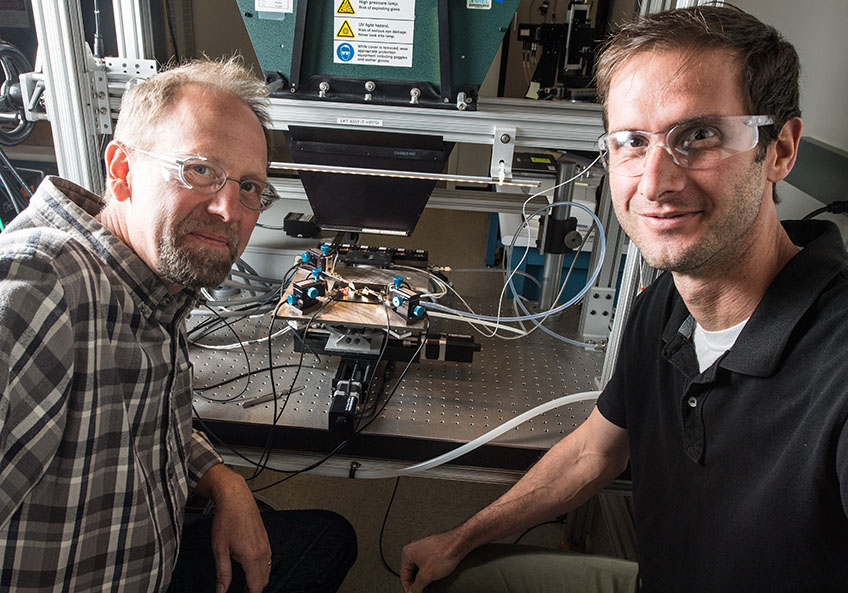Researchers at the National Renewable Energy Laboratory (NREL) have created a record-shattering new solar cell. The device can convert sunlight to energy at nearly 50% efficiency, much better than present alternatives.

Image credits Dennis Schroeder / NREL.
Solar cells today typically run with between 15% and 23% efficiency, meaning they convert roughly 1/6th to 1/4th of incoming energy (in the form of sunlight) to electricity. But a new, “six-junction solar cell” designed at NREL boasts an efficiency of almost 50%, a huge increase.
More bang for your sun
“This device really demonstrates the extraordinary potential of multijunction solar cells,” said John Geisz, a principal scientist in the High-Efficiency Crystalline Photovoltaics Group at NREL and lead author of a new paper on the record-setting cell.
The cell has a measured efficiency of 47.1% under concentrated illumination, with one variant setting a new efficiency record under one-sun (natural) illumination of 39.2%.
The team used III-V materials — so called because of their position in the periodic table, also known as the boron group of semiconductors — to build their new cell; such materials have a wide range of light absorption properties that made them ideal for the task. Due to their highly efficient nature and the cost associated with making them, III-V solar cells are most often used to power satellites
The cell’s six junctions represent photoactive layers, and each is designed to capture light from a certain part of the solar light spectrum — in essence, each layer is specialized in absorbing as much as it can from certain parts of incoming light. The device also contains about 140 layers of various III-V materials to support these junctions, however, it’s only one-third the thickness of a human hair, the team explains.
“One way to reduce cost is to reduce the required area,” says Ryan France, co-author and a scientist in the III-V Multijunctions Group at NREL, “and you can do that by using a mirror to capture the light and focus the light down to a point. Then you can get away with a hundredth or even a thousandth of the material, compared to a flat-plate silicon cell. You use a lot less semiconductor material by concentrating the light. An additional advantage is that the efficiency goes up as you concentrate the light.”
France adds that exceeding the 50% efficiency mark is “actually very achievable”, but reaching 100% efficiency is impossible due to the fundamental limits of thermodynamics — then again, that stands true for all engines and devices used to generate or convert power.
Geisz explains that the current hurdle in exceeding 50% efficiency is presented by resistive barriers that form inside the cell which make it harder for electrical currents to flow. While the team is working on tackling this issue, NREL overall is working heavily towards making III-V solar cells more affordable, to give this technology a competitive edge on the market.
The paper “Six-junction III–V solar cells with 47.1% conversion efficiency under 143 Suns concentration” has been published in the journal Nature Energy.









